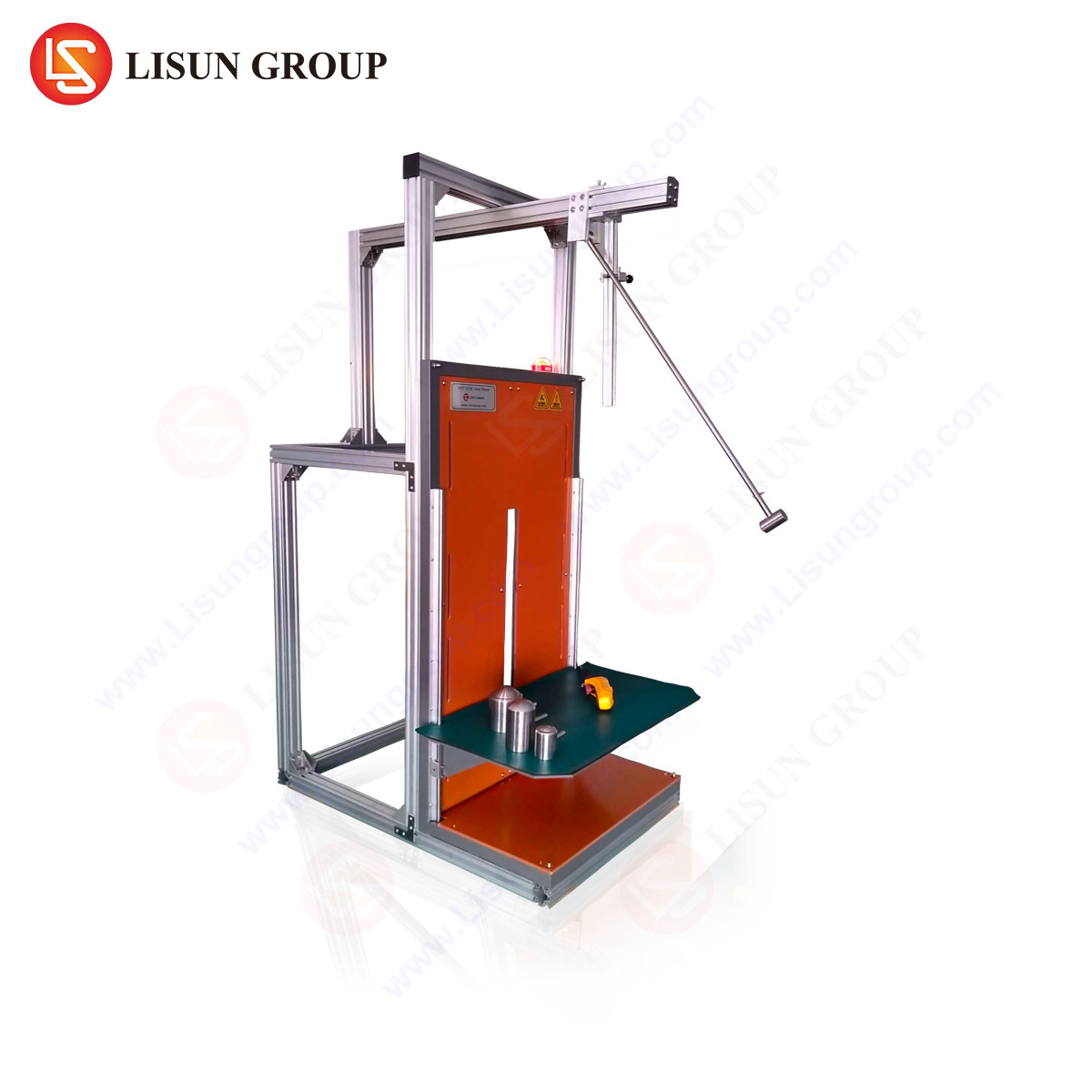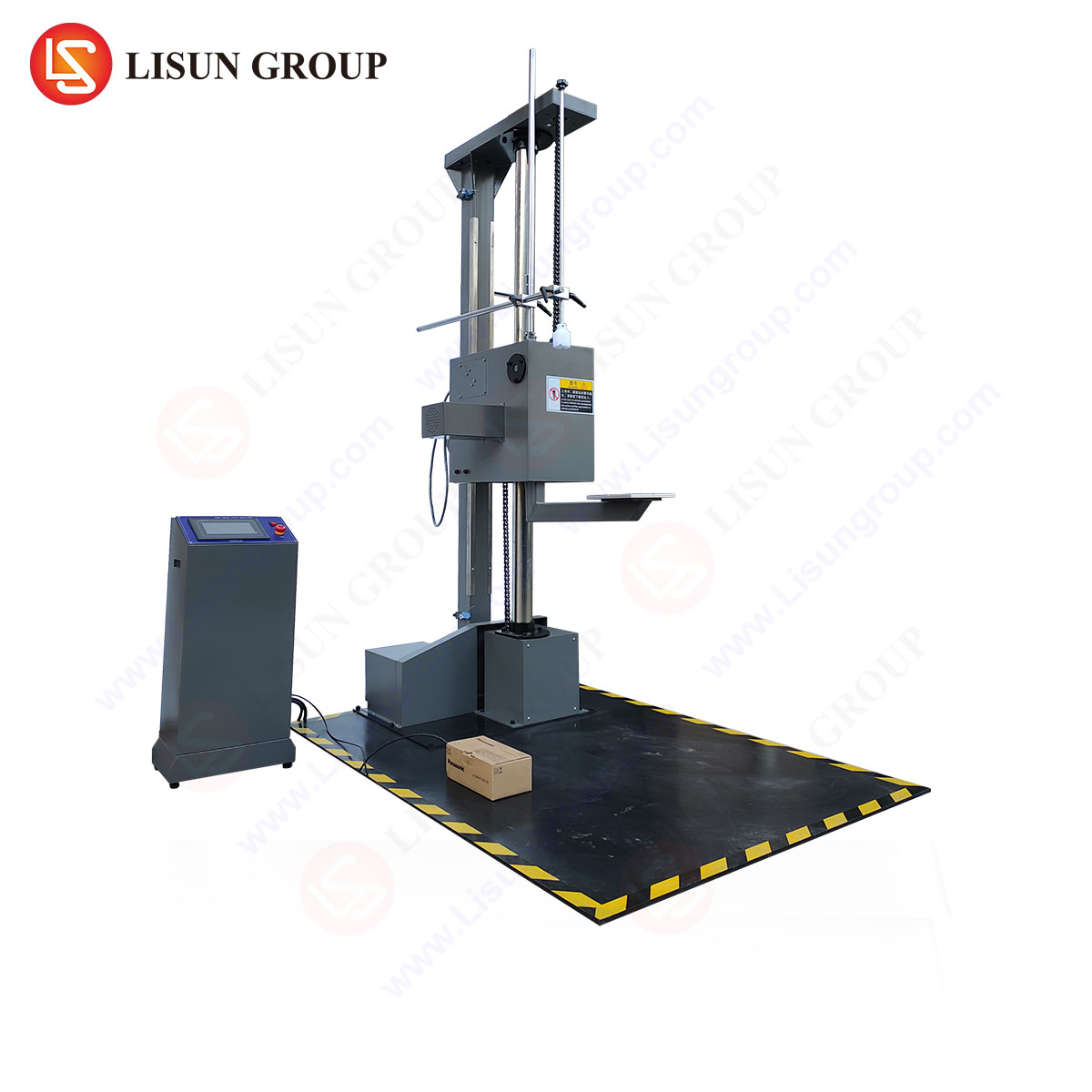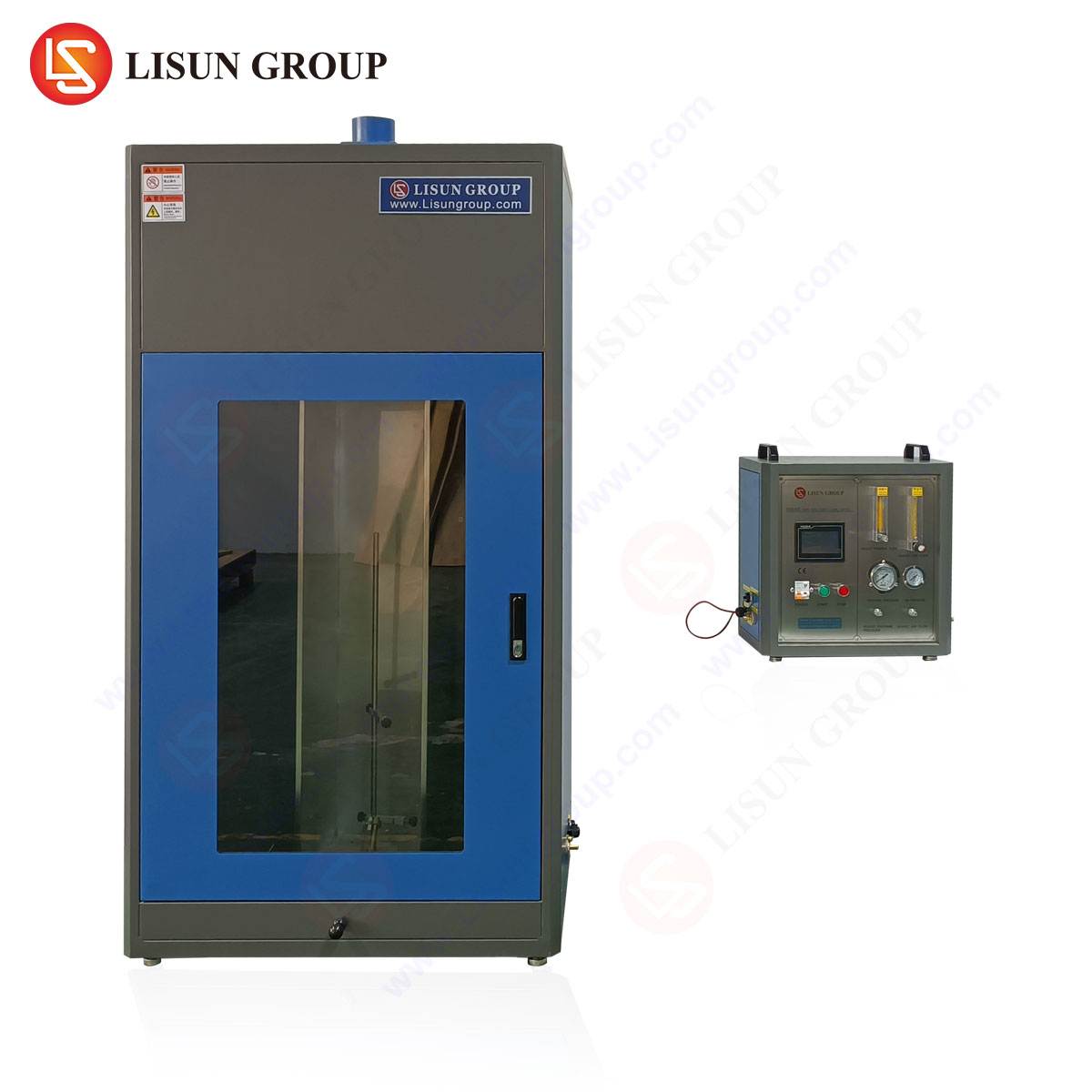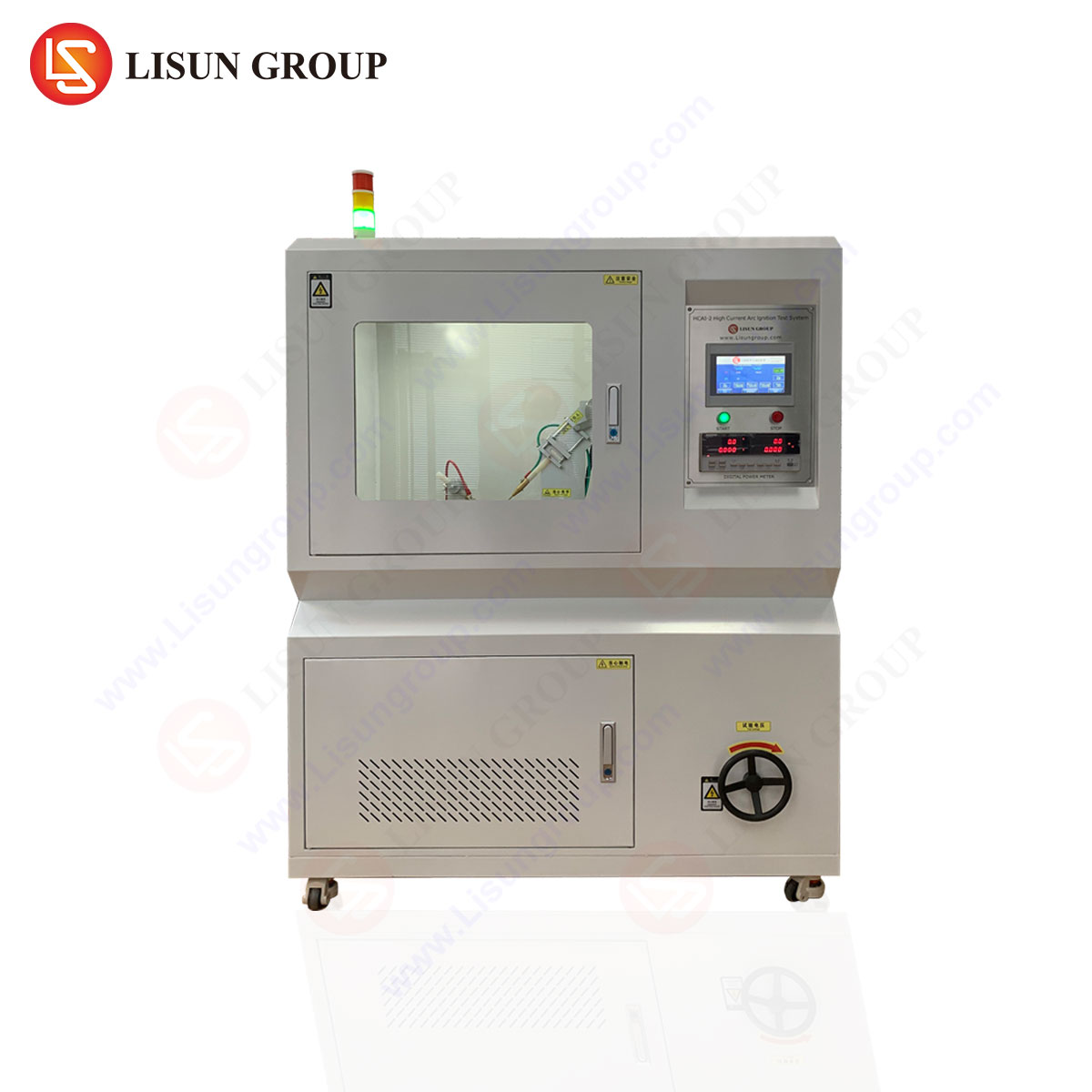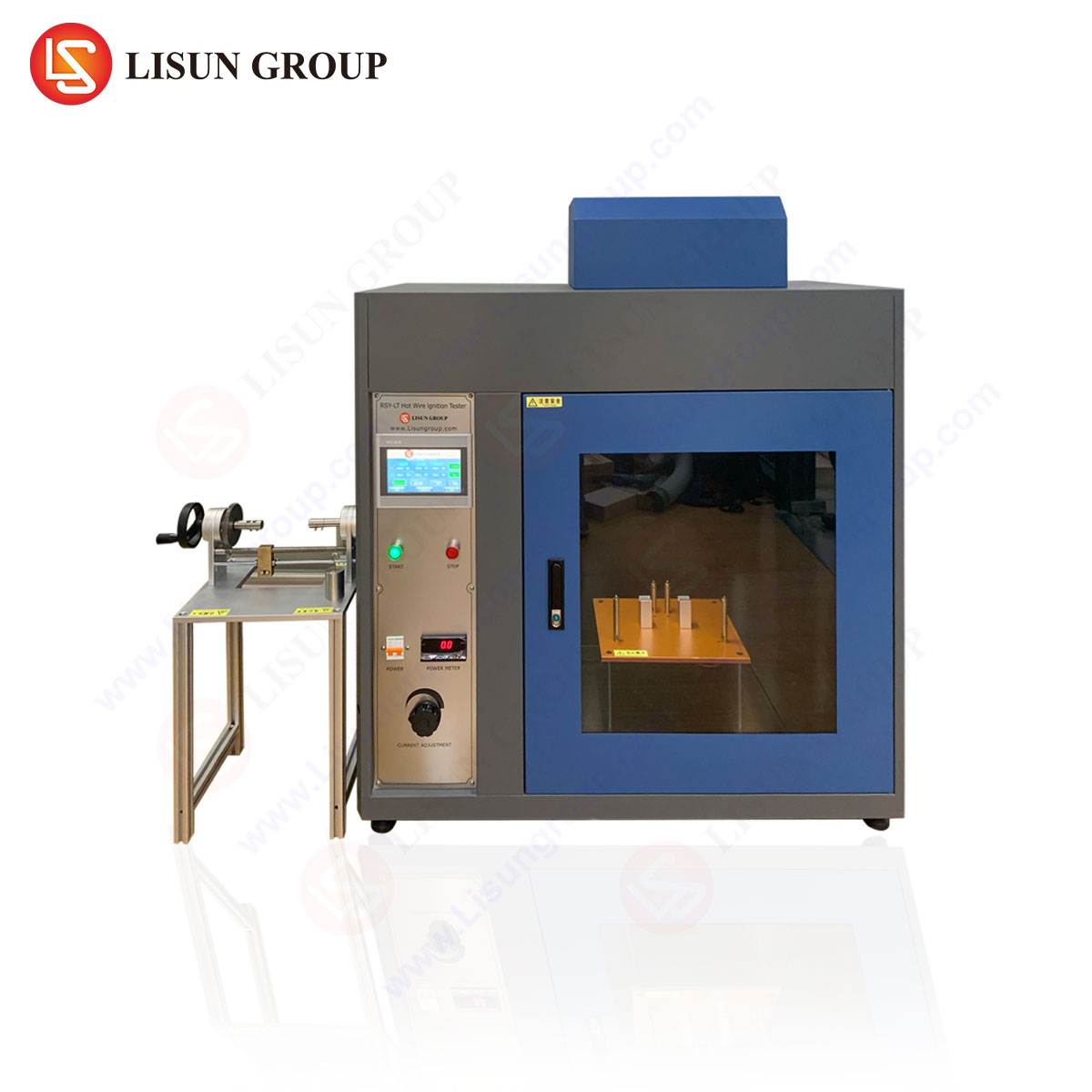Introduction to High Current Arc Ignition Testing
High current arc ignition (HCAI) testing is a critical evaluation process used to assess the safety and reliability of electrical and electronic components under extreme fault conditions. The methodology involves subjecting test specimens to controlled high-current arcs to simulate real-world failure scenarios, ensuring compliance with international safety standards such as IEC 60947-1, UL 1699, and ASTM D495.
The LISUN HCAI-2 High Current Arc Ignition Test System is a precision instrument designed to conduct these evaluations with repeatability and accuracy. This article provides a detailed examination of the testing methodology, the operational principles of the HCAI-2, and its applications across multiple industries.
Fundamental Principles of High Current Arc Ignition
An electric arc is a high-energy plasma discharge that occurs when current flows through an ionized gas medium. In high-current scenarios, arcs generate extreme temperatures (exceeding 5,000°C), posing fire and equipment damage risks. The HCAI test replicates these conditions to evaluate:
- Arc initiation characteristics (minimum current required for sustained arcing)
- Arc propagation behavior (how an arc spreads across conductive surfaces)
- Material resistance (ability of insulating materials to prevent arc formation)
The HCAI-2 system employs a programmable power supply capable of delivering currents up to 2,000 A, with adjustable voltage ranges (10–600 V) to simulate various fault conditions. A high-speed data acquisition module captures transient arc parameters, including voltage drop, current waveform, and arc duration.
Test Setup and Instrumentation Requirements
1. Electrode Configuration and Specimen Mounting
The test setup requires two electrodes (typically tungsten or copper) positioned at a calibrated distance (0.5–10 mm, adjustable per standard requirements). The specimen—whether a switch, relay, PCB trace, or insulating material—is secured in a test fixture to ensure consistent contact pressure.
2. Power Supply and Control System
The HCAI-2 integrates a stabilized DC/AC power source with closed-loop feedback to maintain precise current regulation. Key specifications include:
| Parameter | Specification |
|---|---|
| Maximum Current | 2,000 A |
| Voltage Range | 10–600 V |
| Arc Duration Control | 1 ms–10 s (programmable) |
| Waveform Capture | 1 MHz sampling rate |
3. Environmental Controls
Testing may require controlled atmospheres (e.g., air, nitrogen, or SF6) to replicate specific operating conditions. The HCAI-2 supports gas chamber integration for such evaluations.
Testing Procedures and Compliance Standards
Step 1: Pre-Test Conditioning
Specimens are preconditioned at 23±2°C and 50±5% relative humidity for 24 hours to eliminate moisture-related variances.
Step 2: Arc Initiation and Monitoring
- A high-current pulse is applied across the electrodes.
- The system records:
- Breakdown voltage (minimum voltage to initiate an arc)
- Arc sustainability (duration before self-extinguishment)
- Energy dissipation (calculated via ∫V·I·dt)
Step 3: Post-Test Analysis
- Visual inspection for carbon tracking, erosion, or molten debris.
- Electrical continuity verification to detect latent failures.
Relevant Standards
- IEC 60947-1: Low-voltage switchgear and controlgear
- UL 1699: Arc-fault circuit interrupters
- ASTM D495: Standard test method for high-voltage, low-current, dry arc resistance
Industry Applications of HCAI Testing
1. Automotive Electronics
High-current arcs in automotive relays or battery connectors can lead to catastrophic failures. The HCAI-2 evaluates arc resistance in:
- EV battery management systems (BMS)
- High-voltage contactors
2. Household Appliances
Faulty switches or relays in appliances (e.g., washing machines, HVAC systems) may arc under load. Testing ensures compliance with IEC 60335-1.
3. Aerospace and Aviation Components
Arc-resistant materials for avionics wiring are validated under simulated altitude conditions using the HCAI-2’s environmental chamber.
4. Telecommunications Equipment
Power distribution units (PDUs) and surge protectors are tested for arc flash resistance per Telcordia GR-1089-CORE.
Competitive Advantages of the LISUN HCAI-2 System
- Precision Waveform Capture – 1 MHz sampling detects microsecond-scale arc transients.
- Multi-Standard Compliance – Configurable for IEC, UL, ASTM, and proprietary test protocols.
- Automated Reporting – Integrated software generates pass/fail reports with waveform analytics.
- Safety Interlocks – Emergency cut-off and arc containment shielding protect operators.
Case Study: Arc Resistance in Industrial Control Relays
A manufacturer of industrial relays used the HCAI-2 to test a new ceramic-insulated design. The system identified:
- Breakdown voltage: 450 V (exceeding IEC 60947-1 requirements)
- Arc duration: <5 ms (self-extinguishing)
- Post-test insulation resistance: >1 GΩ
This data validated the relay’s suitability for mining equipment, where dust-induced arcing is a known hazard.
FAQ: High Current Arc Ignition Testing
Q1: What is the difference between high-current and low-current arc testing?
High-current tests (e.g., 1,000–2,000 A) evaluate catastrophic failure modes, while low-current tests (e.g., 1–30 A) assess intermittent arcing in electronics.
Q2: Can the HCAI-2 simulate DC and AC arcs?
Yes, the system supports both DC and AC (50/60 Hz to 400 Hz) waveforms.
Q3: How does environmental humidity affect arc ignition?
Humidity lowers air dielectric strength, reducing the voltage required for arc initiation. The HCAI-2’s climate chamber controls this variable.
Q4: What industries mandate HCAI testing?
Automotive (ISO 6469-3), aerospace (DO-160), and industrial controls (IEC 60204-1) have strict arc-resistance requirements.
Q5: Is operator training required for the HCAI-2?
LISUN provides certified training covering safety protocols, test programming, and data interpretation.


